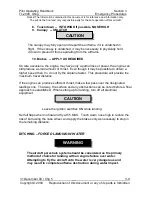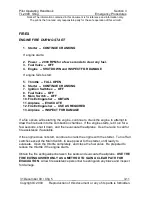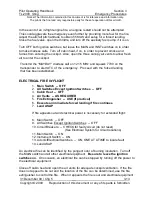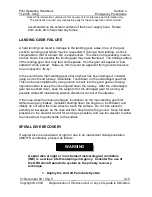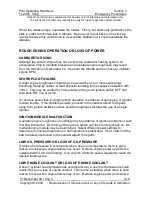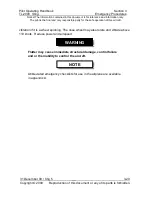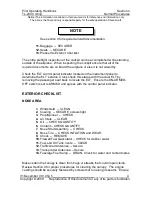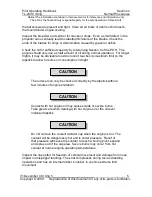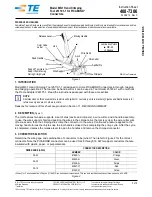
Pilot Operating Handbook
Section 3
TL-2000
Sting
Emergency Procedures
Notice! The information contained in this document is for reference and information only.
The pilot is the final and only responsible party for the safe operation of this aircraft.
31 December 09 / Chg 5
__
3-13
Copyright © 2009 Reproduction of this document or any of its parts is forbidden.
In the event of an in-flight engine fire, an engine restart should not be attempted.
This could aggravate the emergency even further by providing more fuel for the fire.
Adjust the aircraft pitch attitude to obtain 55 KIAS and setup for a forced landing.
Close the fuel valve, open the throttle, and turn off the auxiliary fuel pump, if it is on.
Turn OFF both ignition switches, but leave the MAIN and INST switches on in order
to make distress calls. Turn off cabin heat, if on, in order to prevent smoke and
fumes from entering the cockpit. Also, open the three canopy air vents to allow fresh
air to enter the cockpit.
Transmit the “MAYDAY” distress call on 121.5 MHz and squawk 7700 on the
transponder to alert ATC of the emergency. Proceed with the forced landing
that has been established.
ELECTRICAL FIRE
IN FLIGHT
1.
Main Switch -- OFF
2.
All Switches Except Ignition Switches -- OFF
3.
Cabin Heat -- OFF
4.
Air Vents -- AS REQUIRED
5.
Fire Extinguisher -- USE (if practical)
6.
Execute an immediate forced landing if fire continues
7.
Land ASAP
If fire appears out and electrical power is necessary for extended flight:
8. Main Switch -- OFF
9. All Switches Except Ignition Switches -- OFF
10. Circuit Breakers -- CHECK for faulty circuit (do not reset)
(See Electrical System for circuit locations)
11. Main Switch -- ON
12. Instrument Switch -- ON
13. Avionic/Electrical Switches -- ON, ONE AT A TIME to locate fault
14. Land ASAP
An electrical fire can be identified by the pungent odor of burning insulation. Turn off
the MAIN switch and all other electrical equipment.
Be sure to leave the ignition
switches on.
On occasion, an electrical fire can be stopped by turning off the power to
the electrical equipment.
Close off cabin heat and open the air vents for adequate cockpit ventilation. If the fire
does not appear to be out and the location of the fire can be determined, use the fire
extinguisher to control the fire. When it appears the fire is out and electrical equipment











